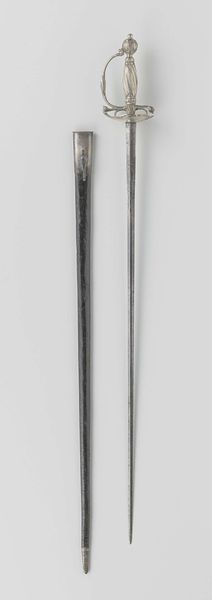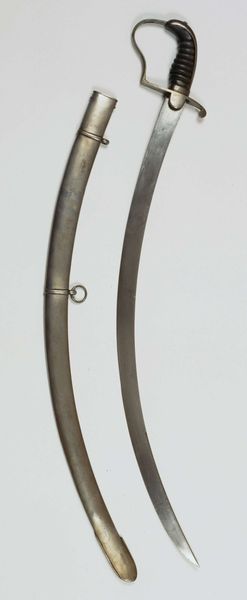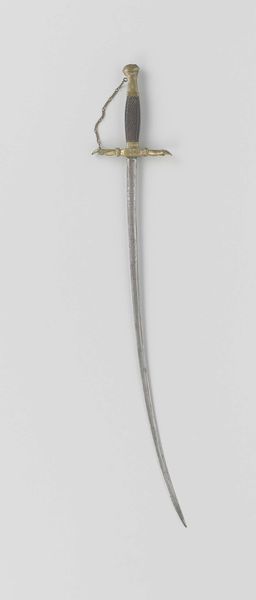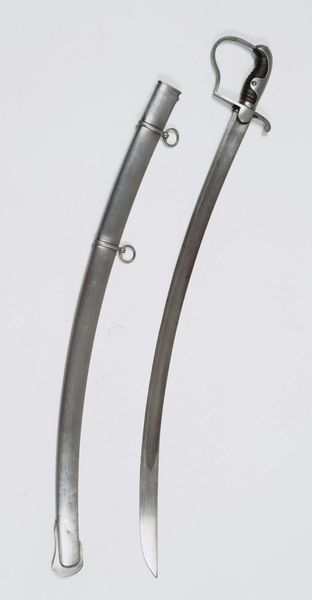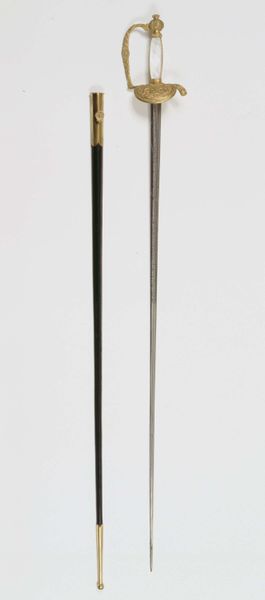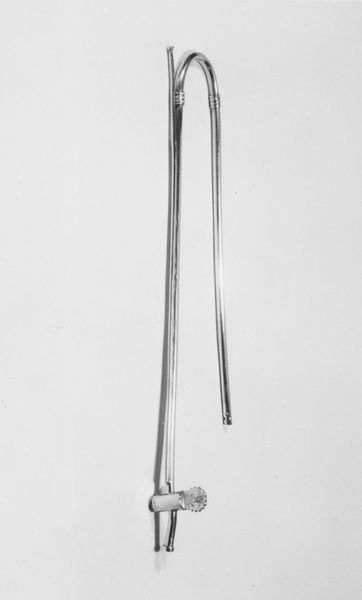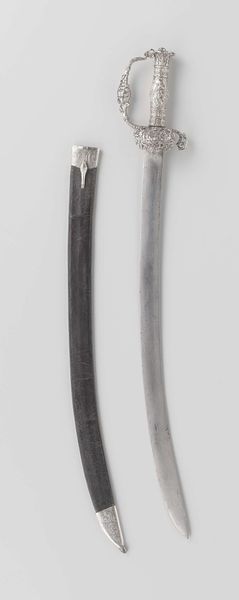
metal
#
metal
Dimensions: length 99 cm, length 86.3 cm, width 3.2 cm, thickness 9 mm
Copyright: Rijks Museum: Open Domain
Curator: Here we have a saber made of metal; it's formally known as "Sabel lichte cavalerie model nr. 3, M.1814 met schede." Dating roughly from 1814 to 1866 and created by S. de Jager, this saber clearly held military purpose. Editor: Visually, it strikes me as an object of immense weight, both literally, given the material, and metaphorically. It's a tool built for imposing a very specific social and political order through force, if necessary. Curator: Precisely. The years in which it was made situate it in a period of immense societal upheaval after the Napoleonic wars, which deeply affected politics and culture on many fronts. We might consider the implications of military objects like this when thinking about nation building, and the role of institutional violence in constructing concepts like the "citizen." Editor: Absolutely, we can ask what sort of "citizen" does a tool like this both imagine and then require? It enforces a stark binary: us versus them, obedience versus resistance, worthy versus expendable. What are the cultural narratives circulating during the years this was made? What social anxieties or collective fantasies is it meant to alleviate? Curator: The choice of materials here also speak volumes. Its polished sheen reflects back not just light but, in its time, reflected a symbol of power, creating both awe and possibly, inspiring intimidation from both those who wielded it and who were forced to gaze upon it. Editor: Right, and what’s key to understand is the social dimension of that “power.” Power isn't abstract. The handle, the blade—each designed for specific forms of physical interaction within a framework of accepted violence. Curator: To think about the historical reception, we might explore military records, personal accounts, or visual culture of the period to gauge how such weaponry was perceived and its role in military strategies. Editor: From my perspective, it makes us think of the embodied nature of oppression. These objects are inseparable from systems of hierarchy, whether we talk about the design, the manufacture or intended use. Curator: Seeing objects like this pushes us to contemplate a nuanced vision of our world. It speaks volumes, even if now rendered inert. Editor: Indeed, thinking about the way the blade meets the hand allows us a unique point of reflection to engage and learn about those forces shaping human action in the theater of conflict.
Comments
No comments
Be the first to comment and join the conversation on the ultimate creative platform.

